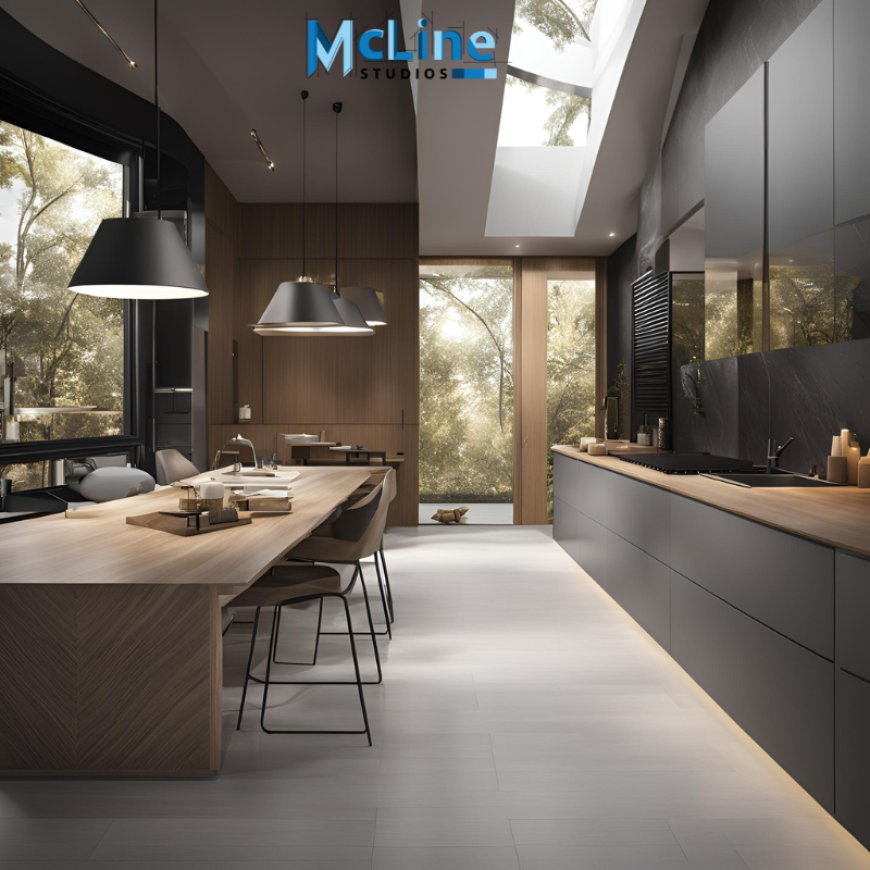Why Interior Designers Need 3-D Modelling?
3D modeling is the process of creating a three-dimensional representation of any object or surface using specialized software. These models are defined by their geometry and allow for a detailed and accurate depiction of an object from all angles.

Why Interior Designers Need 3-D Modelling?
In interior design, precision and clarity are key to successful project execution. One of the most transformative tools that have become indispensable in this field is 3D modeling. This technology allows interior designers to create lifelike, three-dimensional representations of their concepts, enabling a deeper understanding of how different design elements will come together in real spaces.
Unlike traditional 2D drawings, which can sometimes be difficult for clients and contractors to interpret, 3D models offer a clear, interactive, and comprehensive view of the proposed design.
From experimenting with different layouts to visualizing textures and lighting, 3D modeling equips designers to refine and present their ideas with greater accuracy and confidence. In this article,
What is 3D Modelling?
3D modeling is the process of creating a three-dimensional representation of any object or surface using specialized software. These models are defined by their geometry and allow for a detailed and accurate depiction of an object from all angles. 3D models can be used in various fields, such as architecture, engineering, entertainment, and product design.
Common software tools used for 3D modeling include SketchUp, AutoCAD, Revit, and 3ds Max. SketchUp is known for its ease of use, while AutoCAD offers precision and versatility in both 2D and 3D design. Revit is widely used in the architectural field for its integration with Building Information Modeling (BIM), and 3ds Max excels in producing high-quality visualizations and animations.
Unlike traditional 2D drawings, which only display an object from one or two perspectives, 3D models provide a more comprehensive view, allowing for spatial visualization. This helps users to better understand the dimensions and relationships of different components.
Benefits of 3D Modelling for Interior Designers
3D modeling enhances visualization, improves client communication, enables faster design iterations, and fosters better collaboration with architects and contractors.
Enhanced Visualization
One of the most significant benefits of 3D modeling for interior designers is the ability to visualize spaces in three dimensions. Unlike 2D plans, which can sometimes be difficult to interpret, 3D models provide designers and clients with a comprehensive view of the space. This allows them to see how furniture, textures, lighting, and layout work together

Improved Client Communication
3D models also play a vital role in improving communication between designers and clients. When clients can visualize their space in a realistic, three-dimensional way, they can grasp design ideas more clearly. This visualization reduces ambiguity and helps clients offer more specific, actionable feedback.
Faster Design Iteration
The flexibility of 3D modeling also enables faster design iterations. Instead of laboriously redrawing or revising 2D plans, designers can quickly adjust 3D models to reflect new ideas or client feedback. This streamlined process allows for rapid modifications to design elements like color schemes, furniture placement, and materials, leading to faster approvals and fewer client revisions.
Collaboration with Other Stakeholders
Beyond client communication, 3D modeling also enhances collaboration with other key stakeholders such as architects, contractors, and engineers. These models provide a shared visual language, making it easier for different teams to coordinate and understand design decisions.
Boosting Creativity and Design Innovation
3D modeling fosters creativity and design innovation by enabling real-time experimentation, customization, and personalized solutions tailored to client needs.
Exploring New Ideas
3D modeling provides designers with a dynamic platform to experiment with various elements such as textures, furniture arrangements, and color schemes in real-time. By manipulating these features within a virtual environment, designers can visualize how different components will interact, allowing them to test ideas without physical limitations. This flexibility encourages quick iterations, helping designers push the boundaries of creativity.
Innovation in design thrives in such environments, as it enables out-of-the-box thinking. The ability to see immediate results from different design choices fosters creativity, prompting designers to experiment with combinations they may not have considered in traditional drafting.
Customization and Personalization
Designers can more easily customize and personalize projects by manipulating 3D models according to the specific preferences and needs of clients. By adjusting aspects like furniture placement, lighting effects, and finishes in real time, they can quickly adapt to feedback or unique client requests.
Additionally, 3D models provide a visual way to demonstrate various design themes and styles through multiple iterations. By presenting different versions of a project, designers allow clients to explore a variety of design possibilities before making decisions.
The End Note
In conclusion, 3D modeling has become an indispensable tool for interior designers, providing a range of benefits that significantly enhance the design process. By offering enhanced visualization, improved client communication, faster design iterations, and better collaboration with other stakeholders, 3D models enable designers to work more efficiently and effectively.
The ability to experiment with new ideas and customize designs in real-time fosters creativity and innovation, allowing for more tailored solutions that meet clients' needs. Ultimately, 3D modeling helps interior designers deliver more visually compelling and precise design solutions, ensuring higher client satisfaction and project success.

 Mclinestudios
Mclinestudios